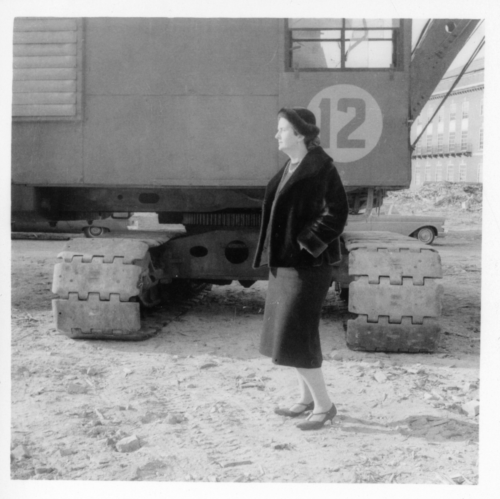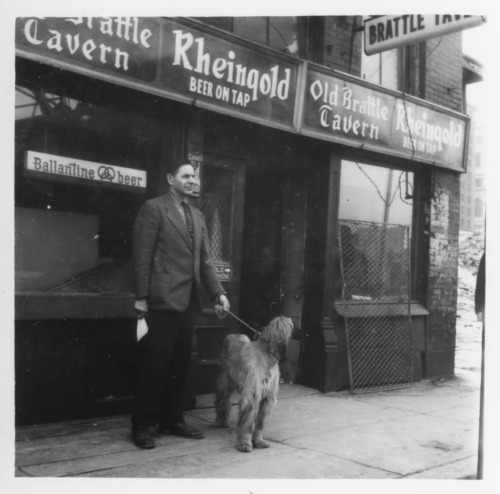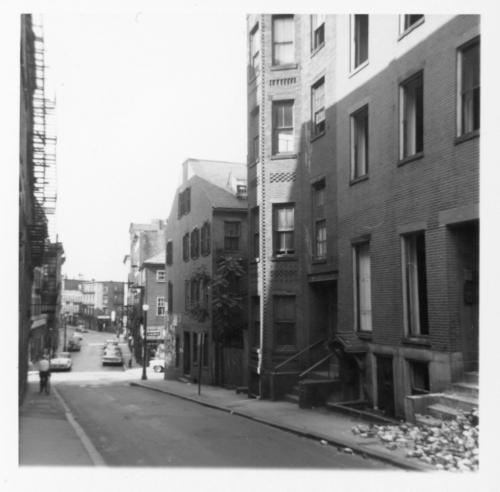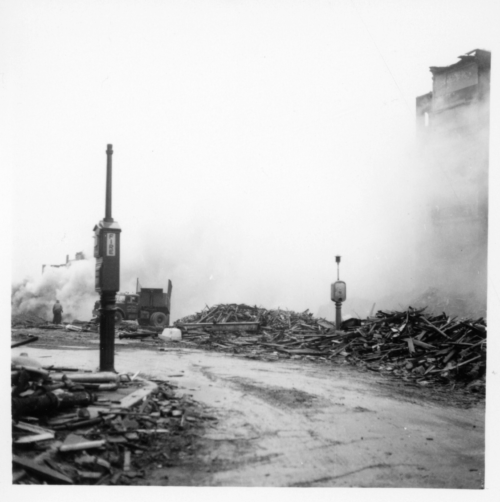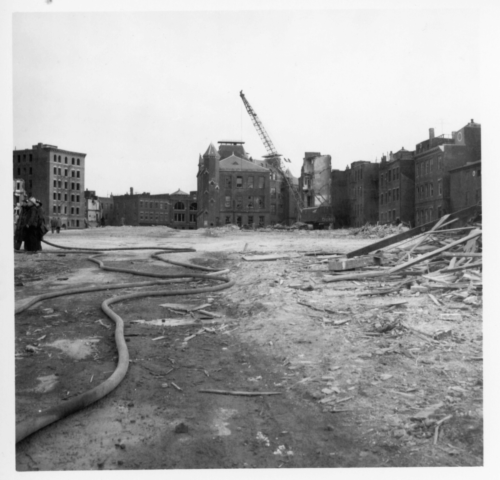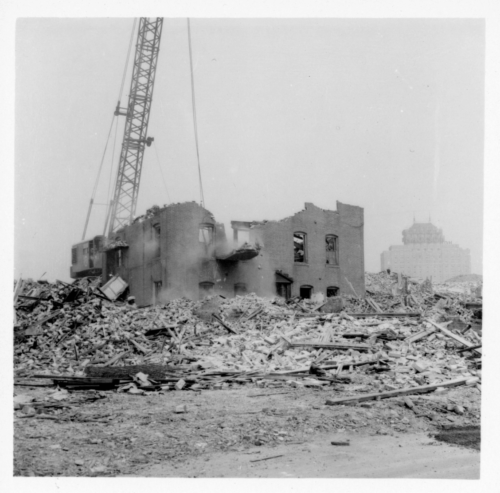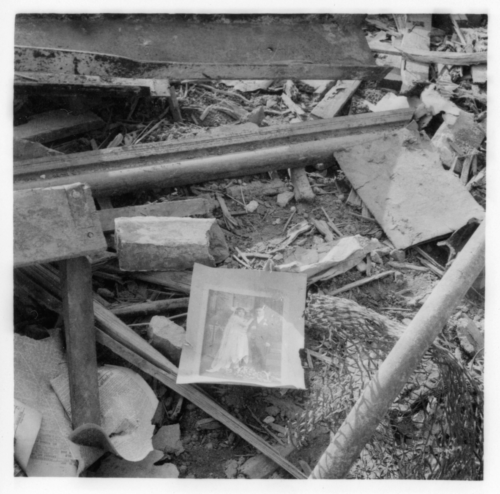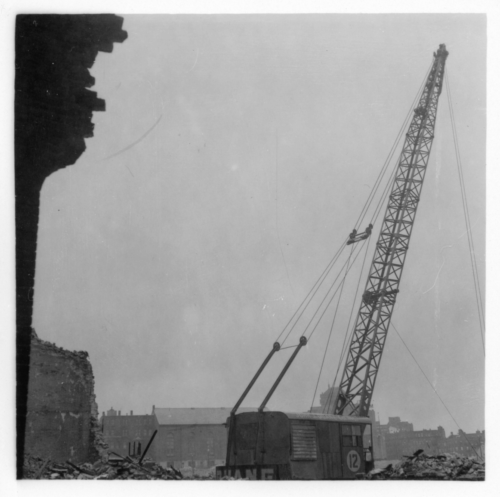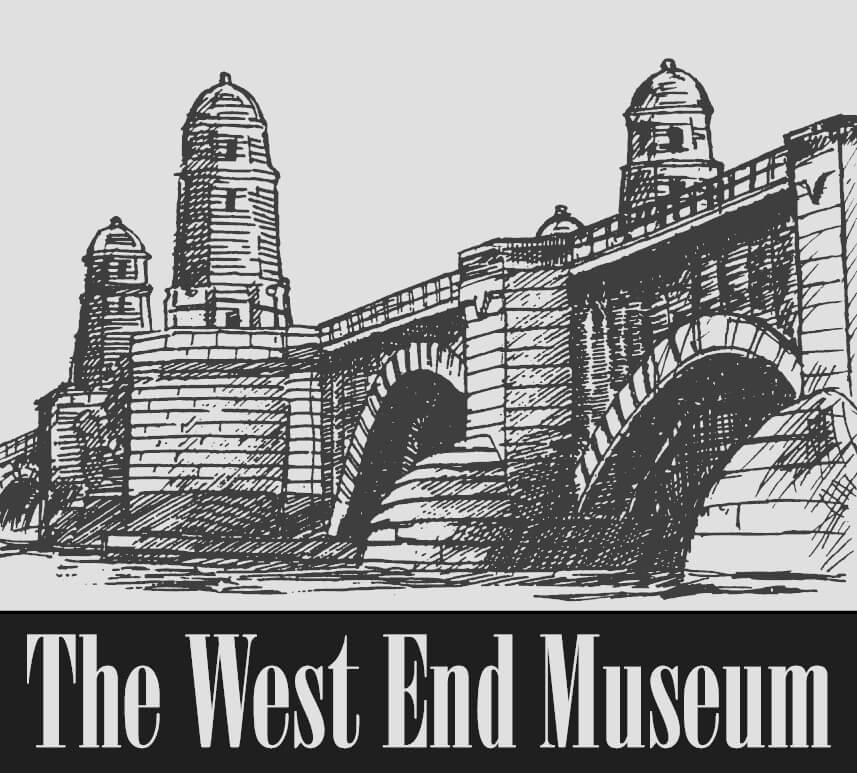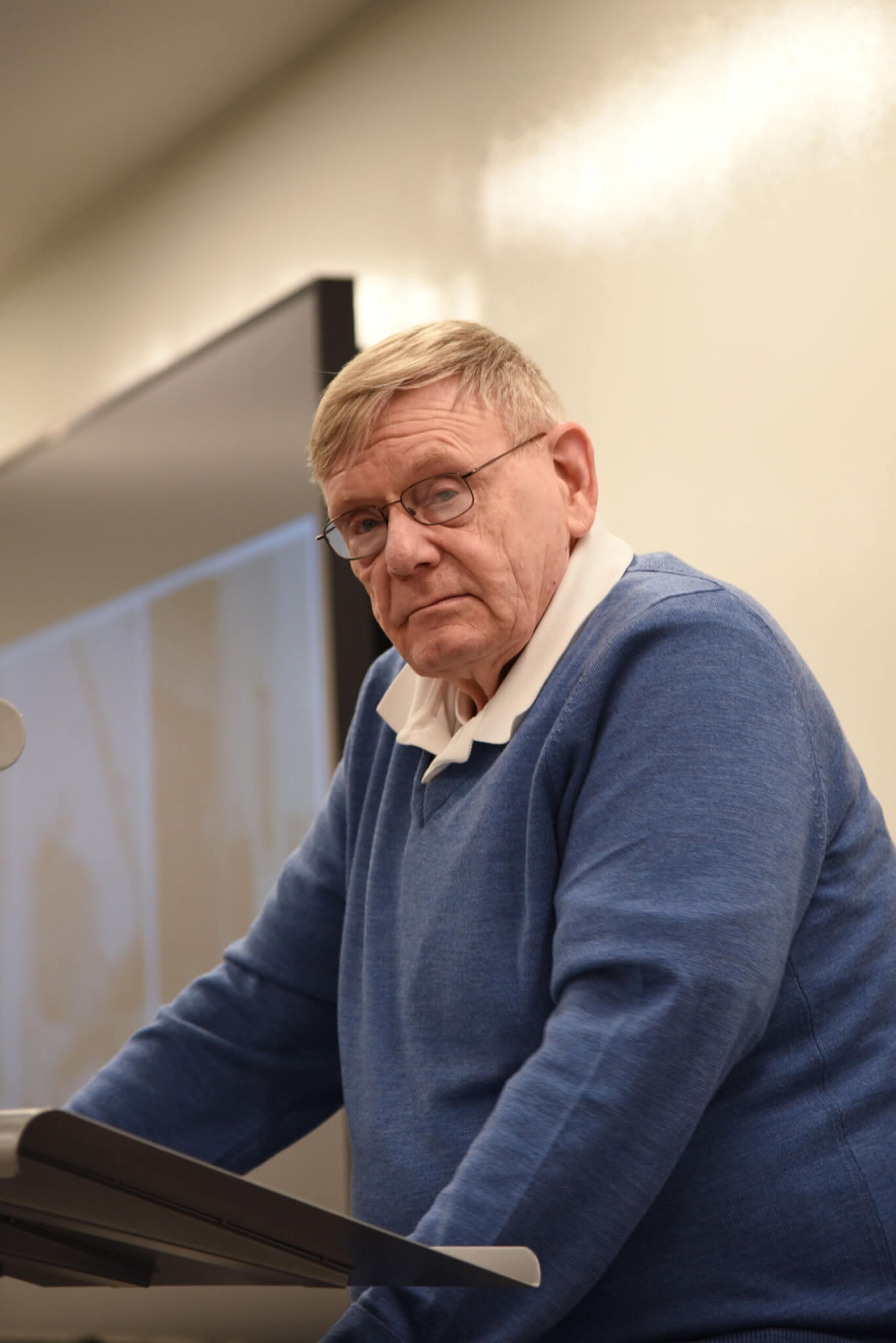Claudia Kelty & Stephen Edgell
From 1958 to 1960, Claudia Kelty and Stephen Edgell systematically photographed the demolition of the West End neighborhood, street by street. The Edgells continued their involvement in post-demolition West End activities, creating an (unpublished) book on the West End and becoming members of the West End Historical Committee, and later its successor, the West End Historical Association. In March of 2023, their son, Stephen Edgell Jr., donated their extensive collection to The West End Museum, including records, art, ephemera, and, most significantly, the 1,700 photographs that his parents took during the West End Project.
Claudia (Kelty) Edgell (1918-2002) and Stephen Edgell (1915-1981) of Winchester, MA, became actively involved with the West End in 1958, when they learned of the neighborhood’s impending demolition as part of an urban renewal project. Claudia’s father, Henry M. Kelty, had lived in the West End on Allen Street as a young boy with his family before moving to Cambridge. Claudia, an artist since childhood, attended the School of the Museum of Fine Arts, Boston, winning the first place prize from the design department upon her graduation. She married Stephen Maurice Edgell, formerly of Brookline and Greenwich, Connecticut, in 1947. Claudia continued to successfully paint and draw professionally under her maiden name, and her work was acquired by both private patrons and museums, including the MFA.
In August 1958, the Edgells were on vacation on the South Shore of Massachusetts, when they read in a newspaper that the long-discussed West End Project had commenced. As Claudia recalled: “We [her and Stephen] had often thought about taking a few pictures through there, although there had seemed to be no particular hurry, but now, almost in a panic, we rushed back to town early the next day, to take photographs of the place my father had so often and so glowingly described.” That next day, the couple began taking photographs of the neighborhood, Stephen (a professional photographer) using his Rolleiflex camera, and Claudia, a small eye-level camera.
Over the next two years, the Edgells methodically took almost 2,000 photographs of the West End before, during, and after the demolition. It began, in part, as a sentimental project, as Claudia photographed buildings her family had talked about, including the old JJ Walker Stable on North Russell street, where her grandparents had kept their carriage horses. As they continued to walk, however, they found that they couldn’t stop taking pictures of the neighborhood that would soon be gone. They decided to devote the coming years to documenting the neighborhood through the demolition process.
Claudia, in her unpublished book on the West End, describes the couple’s photography project in detail:
During the two years that we spent recording the West End with a camera, we made no attempt to take “arty” pictures, at all. We simply wanted to make a faithful and factual record of a picturesque section of Boston with straightforward shots of everything…
We didn’t attempt to take any trick angle shorts, but in the wrecking scenes we did try to take advantage of the drama inherent in the process of demolition…
Some days were ideal for picture taking, but in the winter, it was often so bitterly cold and windy we could barely hold a camera. A great deal of the time, it was difficult to get clear pictures because of the clouds of brick and plaster dust that filled the air as buildings came tumbling down, or the icy wind from the river whirled through empty spaces where the protective bulk of buildings once stood. The latter part of February and the first of March 1960, were so cold and windy that we can’t remember ever having been any colder or more miserable. We worked until our feet were without feeling inside our boots, and our fingers no longer could feel the shutter release on the camera…
We wanted to get representative interior shots, but many people didn’t feel that their places looked the way they should, since they were in the process of moving. Others evidently thought we had something to do with the whole project, and after peering suspiciously at us through a crack in the partially opened door, they wouldn’t let us in…
Since it was a physical impossibility to be everywhere at once, while we were busy taking pictures in one section, the cranes would be busily wrecking in other sections and, unfortunately, we missed a building here and there, but only a few. It was also a physical impossibility to take a picture of every building and every store and business establishment, so we took general street scenes and views, representative shops, and all old houses and buildings, except the few mentioned…
We decided to take as many “before and after” wrecking pictures as we could, to show what could happen to a fine old home or building, and these, of course, are tragic, even to casual viewers who have no particular interest in the West End…
We deliberately avoided taking pictures of people, as much as possible, because there were so many people who would have made wonderful character studies, that they all deserved to be photographed, and it just wasn’t possible to photograph over two thousand people, if we were going to record the buildings, and after all, that was our primary purpose…
The last week that we took photographs of the West End was in the Fall of 1960… We promised to stop by again before they had all left for good, said a rather forlorn goodbye, and picked our way through the rubble to the car, turning now and then to wave, and take a long look at the ruins of the West End, as the rosy hues of the wintry sun flowed intensely before dying down into cool shadows.
After collecting several hundred photos of the neighborhood, the Edgells decided to create a book to house the pictures and other information about the neighborhood. For the book, The Old West End of Boston, The Story of a Neighborhood, Claudia made sketches, gathered the photographs, and wrote over three-hundred pages (fourteen chapters) of text on West End history, streets, and landmarks. The Edgells worked closely with the Society for the Preservation of New England Antiquities, the Bostonian Society, and the Boston Athenaeum in researching their book. Over the years, the Edgells continued their involvement in post-demolition West End activities. They were members of the West End Historical Committee, and later its successor, the West End Historical Association. Claudia also designed what would become the original logo of The West End Museum.
In 1981, Stephen unexpectedly died, and the book project was placed on pause. Claudia resumed work on the book in the 1990s, though it remained unpublished. She passed away in 2002, leaving the photographs to her son, Stephen Edgell Jr.
In March of 2023, Stephen Jr. donated his parents’ extensive collection to The West End Museum, including records, art, ephemera, and, most significantly, 1,700 photographs that his parents took during the West End Project. Stephen Jr., who as a child often accompanied his parents to take photos of the West End, recollected: “My mother did not like the idea of bulldozing buildings and destroying communities… As a family, we took lots of photographs of the West End to preserve that era and area. The old West End may be gone, but it will live forever because of the creation of the West End Museum.”
Article by Grace Clipson, edited by Bob Potenza.
Sources: Boston Sun, “West End Museum hosts Heritage Honoree Night,” December 21, 2023; The Cambridge Chronicle and the Cambridge Sun, “Couple Writing A Book About West End Project,” November 29, 1962; Claudia Kelty Edgell, How the Book Came to be Written & The Photographs, The West End Museum Archives; Museum of Fine Arts, Boston, “Accessions, October 9, 1953 through March 11, 1954,” Bulletin of the Museum of Fine Arts 52, no. 288 (Jun., 1954): 42-47; The West Ender, “West End Book Written by Edgell,” June 1992; Winchester Archival Center, “Wyman School Photograph Album.”


